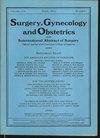The Prognosis of Obstetric Evacuation in Rural Areas in Senegal, Example of Ourossogui Rural Hospital
引用次数: 0
Abstract
Objectives: To describe the epidemiological and clinical profile of the evacuated patients, to analyze the means of evacuation as well as the cost of the evacuation, and finally, to evaluate the maternal-fetal prognosis of the evacuated patients.Material and methods: We carried out a prospective study going from January to December 2015 covering all obstetric emergencies evacuated at the Ourossogui maternity ward. Study variables: epidemiological; evacuation conditions, diagnostic and therapeutic aspects and prognostic aspects.Results: The frequency of obstetric evacuation was 66.2%. Our patients were primiparous (39.2%), out of school (85.6%), married (97.7%) and low income (94.7%) with an average age of 24.8 years. The average number of CPNs was 2.6. More than one in three women had 4 CPNs or more (33.6%). The distance traveled averaged 45.6 km with extremes of 1 km to 160 km. The ambulance was used in 90% of cases. The reasons for evacuation were dominated by obstructed labor in 29.4%; hemorrhages in 26.5%. Eight home deliveries and four en route were noted. The maternal prognosis was favorable in 98.6%. Seventeen cases of death were recorded, ie 1.4%. The child was alive and well in 83.2% and deaths accounted for 16%. Maternal deaths most often occurred among illiterate, low-income, multi-gesting women with fewer than 4CPNs under 35 years of age who traveled long distances and were evacuated by unskilled staff.Conclusion: Emergency obstetric evacuation represents a major challenge for the health system in the Matam region. Improvements include literacy training for the population, continuous training of health personnel and recruitment of practitioners.塞内加尔农村地区产科后送的预后——以乌罗索吉农村医院为例
目的:描述撤离患者的流行病学和临床情况,分析撤离的方式和费用,最后评价撤离患者的母胎预后。材料和方法:我们于2015年1月至12月开展了一项前瞻性研究,涵盖了在Ourossogui产科病房撤离的所有产科急诊病例。研究变量:流行病学;疏散条件,诊断和治疗方面以及预后方面。结果:产科撤离率为66.2%。初产(39.2%)、失学(85.6%)、已婚(97.7%)、低收入(94.7%),平均年龄24.8岁。平均cpn数为2.6个。超过三分之一的妇女有4个或更多的cpn(33.6%)。平均飞行距离为45.6公里,极端距离为1公里至160公里。90%的病例使用了救护车。流产原因以难产为主,占29.4%;26.5%出血。其中有8人在家送货,4人在途中送货。98.6%的产妇预后良好。死亡17例,即1.4%。儿童存活和健康率为83.2%,死亡率为16%。产妇死亡最常发生在35岁以下的文盲、低收入、多胎妇女中,这些妇女的cpn少于4,她们长途跋涉,由不熟练的工作人员撤离。结论:紧急产科后送是马塔姆地区卫生系统面临的主要挑战。改进措施包括对人口进行扫盲培训、对保健人员进行持续培训和招聘从业人员。
本文章由计算机程序翻译,如有差异,请以英文原文为准。
求助全文
约1分钟内获得全文
求助全文

 求助内容:
求助内容: 应助结果提醒方式:
应助结果提醒方式:


